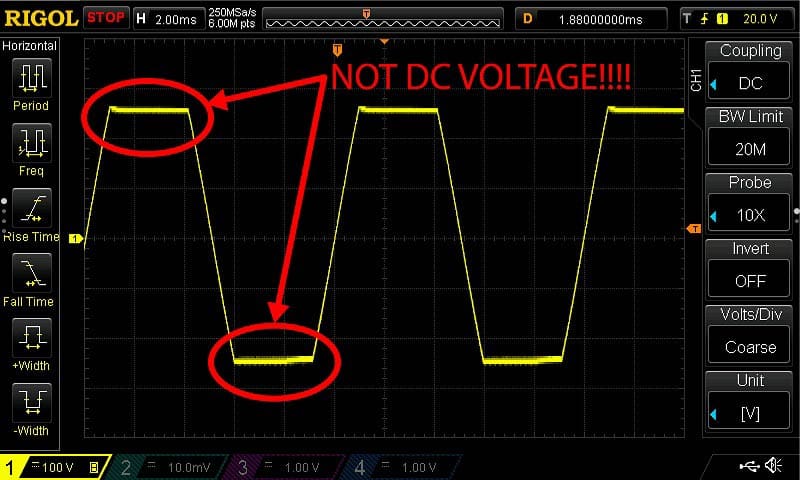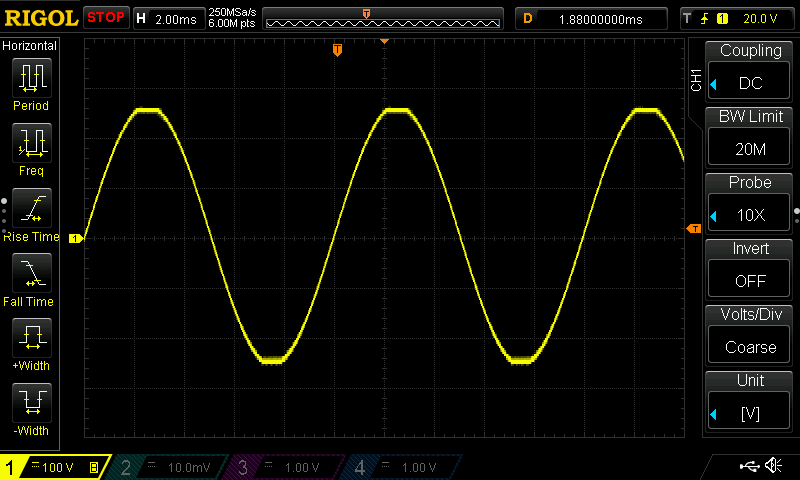Every car audio amplifier on the market has a maximum amount of undistorted power it can deliver to a speaker or subwoofer. When we apply more signal than an amplifier can boost linearly, a significant amount of harmonic distortion is added to that signal. Electronics technicians and engineers usually refer to the point where distortion becomes significant as clipping. That’s a term that’s thrown around a lot, and most people don’t fully understand why clipping happens and what it means.
What Is Amplifier Power?
The laws of physics require that for power to be dissipated in a load, a voltage must be applied across the load, and as a result, a current will flow through it. If we have a 4-ohm resistor and we apply 4 volts across it, 1 amp of current will flow through the resistor. In terms of power in this resistor, we can multiply the current by the voltage to calculate watts. Our example shows that 4 watts are being dissipated in the resistor. If the load were a motor with a coil winding of 4 ohms and we applied 12 volts to it, 3 amps would flow through the motor. In this case, we’d have 36 watts of power being fed into the motor.
All audio power amplifiers attempt to function in a linear fashion. If you send more signal to the input, they increase that signal by a fixed amount. In the same breath, all amplifiers have an upper limit to their power production capability. This limit is the point at which the amp can’t apply more voltage or current to the load to maintain the shape and harmonic content of the original waveform. We refer to the waveform as being clipped because the signal’s tops and bottoms are cut off.

Let’s Talk about Useful Amplifier Power
When clipping occurs, harmonics are added to the audio signal. These high-amplitude harmonics are responsible for creating the flat portions of the audio signal. We’ll be perfectly clear here: These flat parts are NOT a DC voltage. There’s no DC voltage applied to a speaker unless something in the amplifier breaks.

Let’s correlate harmonic content with the shape of the audio waveform. In the three examples below, we can see a 100 Hz sine wave at three levels. The first measurements are taken at an input level that is 5 dB below the second. The second is at a level that includes very close to 1% distortion in the audio signal due to clipping. The third measurements are taken with the input signal increased by another 5 dB.






As you can see, the amplifier’s harmonic content at and above the point that the amplifier starts to add significant distortion to the signal is significant. Thinking about our discussion of an amplifier increasing the amplitude of a signal in a linear fashion, once we reach clipping, things become decidedly non-linear. Attempting to listen to music when the signal is distorted isn’t much fun. Everything becomes garbled and nothing sounds right.
For subwoofers, a tiny bit of distortion is OK as this lets you play bass at higher levels and extract more effective power out of the amp. It’s worth considering that 5% distortion isn’t the same as an increase of 5 dB in output achieved by adjusting the sensitivity control. A level of 5% harmonic distortion in a signal does not represent a significant measurable increase in peak acoustic output at all. If you want your bass louder, add more subwoofers and another amplifier.
For mid-range and high-frequency drivers, you really don’t want any distortion. Not only does it sound terrible, but it also adds a LOT of high-frequency energy to the audio signal, which may result in too much power being sent to your tweeters. This extra power can (and likely will) damage them.
Buy the Right Amplifier for Your Car Audio System
In short, any amplifier power rating that exceeds 1% distortion is useless. Why would it matter if an amp can produce a distorted signal? When shopping for an amplifier, and if the power specification means a great deal to you (and it really shouldn’t), look for qualifying criteria accompanying the provided numbers. Amplifiers that conform to the ANSI/CTA-2006-C standard should be at the top of the list. If not explicitly defined as being compliant with any version of the CEA/CTA-2006 standard, a power spec that includes a specific percentage of distortion, the load impedance and the amplifier’s power supply voltage will suffice. Ratings that don’t have these qualifying factors aren’t comparable to other brands, and it’s worth being suspicious of their relevance. Who cares how much power an amp makes at 10% distortion? Those so-called MAX power ratings are even more useless.
Drop by your local specialty mobile enhancement retailer today to see the amplifier solutions they have available. Don’t be surprised if some of the brands they offer don’t include proper specs; there are more products out there playing games than you’d think.

